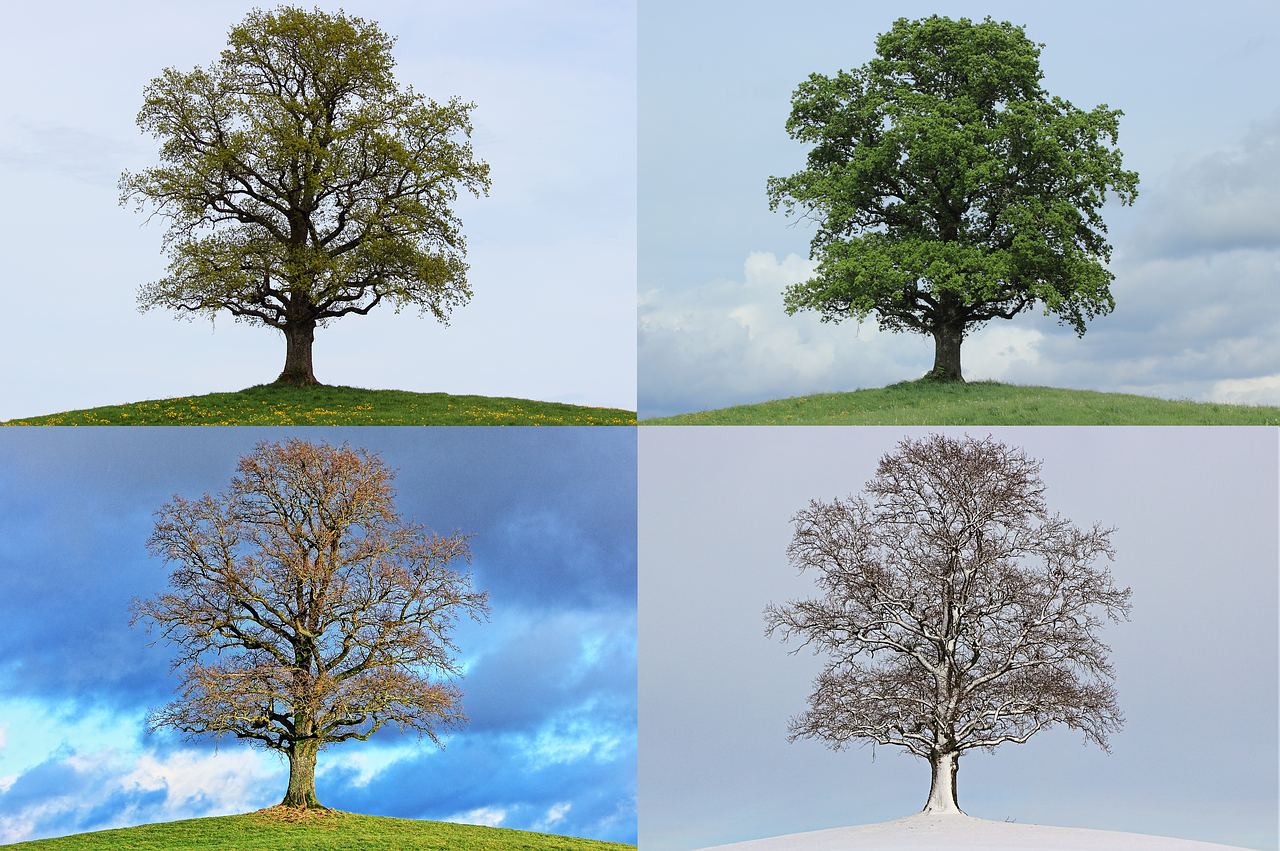Living in Tune with the Seasons
Living in tune with the seasons is about more than just changing your wardrobe. It involves aligning your lifestyle, activities, and mindset with the natural cycles of the year. By embracing the unique qualities of each season, you can enhance your well-being, foster personal growth, and maintain a harmonious balance with nature.
Let’s explore ways to live in tune with the seasons.
1. Understanding Seasonal Changes
Understanding the characteristics and impacts of each season helps you adapt your lifestyle accordingly.
Spring: A time of renewal and growth. Nature awakens, and energy levels rise, making it an ideal season for starting new projects and goals.
Summer: The peak of activity and social interaction. Long days and warm weather encourage outdoor activities and vacations.
Autumn: A period of reflection and preparation. As nature slows down, it’s time to harvest, review accomplishments, and prepare for the colder months.
Winter: A season of rest and introspection. Short days and cold weather encourage indoor activities, rest, and planning for the future.
2. Seasonal Nutrition
Eating in harmony with the seasons can enhance your health and connect you with nature’s cycles.
Spring: Focus on fresh greens, sprouts, and detoxifying foods like asparagus, spinach, and strawberries. These help cleanse and rejuvenate your body.
Summer: Enjoy a variety of colorful fruits and vegetables such as berries, tomatoes, and cucumbers. These hydrating foods help keep you cool and energized.
Autumn: Transition to heartier foods like root vegetables, pumpkins, and apples. These provide the necessary nutrients to prepare your body for winter.
Winter: Embrace warming foods like soups, stews, and whole grains. Include plenty of spices like ginger and cinnamon to boost your immune system.
Seasonal eating also supports you being connected to your local food supply and being connected to the cycles of harvesting to enjoy the abundance and to preserve for different seasons.
3. Seasonal Activities and Self-Care
Adapting your activities and self-care routines to the seasons promotes physical and mental well-being.
Spring: Engage in outdoor activities like hiking, gardening, and spring cleaning. These help refresh your surroundings and mindset.
Summer: Participate in swimming, biking, and other outdoor sports. Prioritize social gatherings and vacations to recharge.
Autumn: Focus on activities like hiking in the woods, attending harvest festivals, and preparing your home for winter. Reflect on your achievements and set new goals.
Winter: Embrace indoor activities like reading, crafting, and meditation. Prioritize rest, reflection, and planning for the year ahead.
4. Seasonal Mindfulness and Reflection
Practicing mindfulness and reflection according to the seasons can deepen your connection to nature and enhance personal growth.
Spring: Reflect on new beginnings and growth. Set intentions and goals for the coming year.
Summer: Practice gratitude for the abundance around you. Reflect on your progress and enjoy the present moment.
Autumn: Focus on letting go of what no longer serves you. Reflect on your achievements and prepare for the future.
Winter: Engage in deep introspection and self-care. Reflect on the past year and plan for new beginnings.
5. Creating a Seasonal Home Environment with decor, rituals and celebrations
Your living space should reflect and support the seasonal changes to enhance your well-being. Decorate, have rituals to mark beginnings and endings and invite the celebration of the seasons into your home and tribe(s).
Spring: Declutter and clean your home. Add fresh flowers and light, airy decor to symbolize new beginnings. Enjoy the days getting longer and celebrate the return of the birds and the return of the leaves, the greenery and the flowers.
Summer: Incorporate bright, vibrant colors and light fabrics. Open windows to let in fresh air and natural light. Go on adventures and have friends over to celebrate the increased daylight hours and being able hang out in the outdoors together. Walk barefoot as much as possible.
Autumn: Add warm, cozy elements like blankets, candles, and autumn colors. Decorate with natural items like leaves, pumpkins, and pinecones. Celebrate the harvest with friends and family.
Winter: Create a warm, inviting space with soft lighting, warm blankets, and seasonal decorations. Use essential oils like cinnamon and clove to create a cozy atmosphere. Celebrate the spirit of Christmas throughout the month of December.
Over these last few years, I find myself more drawn to nature and to the idea that there are natural rhythms that we can align to. I find myself more interested in being connected to the local food supply, and harvesting my garden to share with family and friends and to preserve the freshness for the long winter months. I also want to experiment with seasonal eating by eating more salads in spring and summer and heartier meals in the fall and winter. As I grow my own garden, I find a wonderment in how I can participate in the growth cycle and an appreciation for the food that it supplies. I want to learn how to be a good steward of the soil to ensure it stays healthy.
Working with coaching clients I do see phases of the year and of life and wonder if some of the stress in our society is because we have not created ebbs and flows. There should be times of busyness, fun and rejuvenation. Connection to each other, to ourselves and to nature bring a richness and wisdom to life and I know I will spend my future years being a student of how I can more understand and align with the seasons.
Living in tune with the seasons allows you to embrace the natural rhythms of life, leading to greater harmony, balance, and well-being. By understanding seasonal changes, adapting your nutrition, engaging in appropriate activities, practicing mindfulness, and creating a seasonal home environment, you can fully enjoy and benefit from each time of year. Are you interested in living more in tune with the seasons and if so how do you do that now and what are you interested in exploring further?

